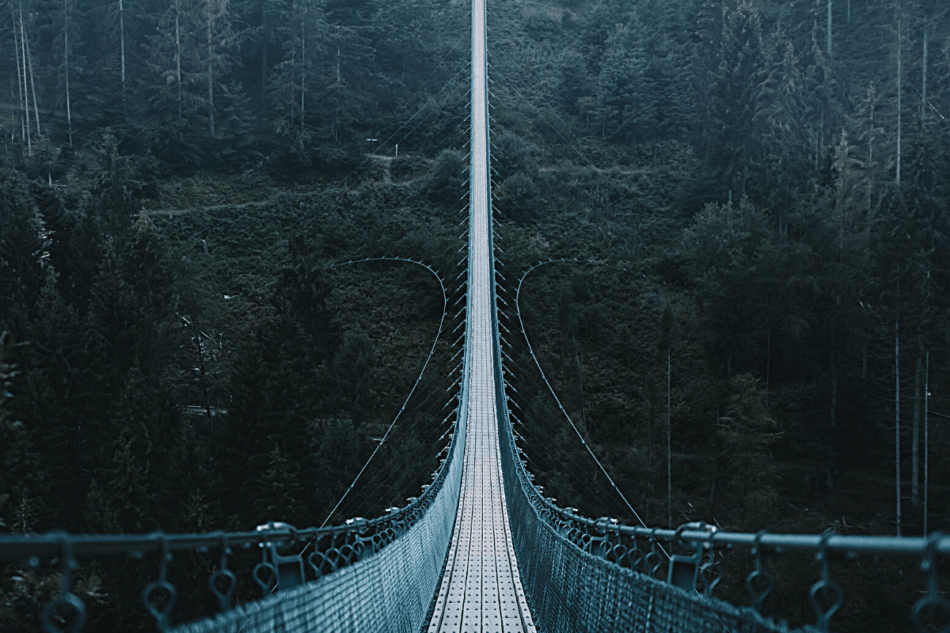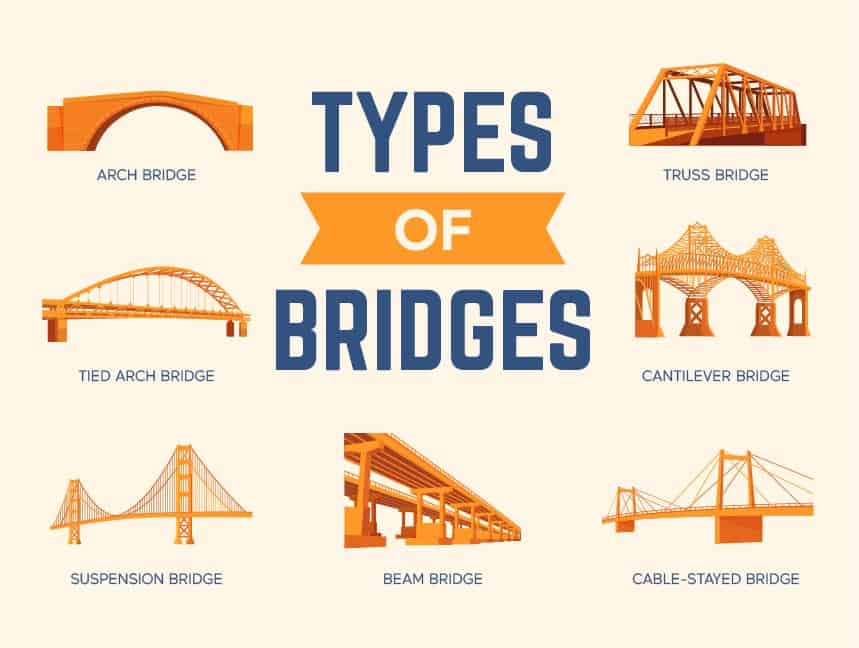Discover why some bridges are known as dangerous or scary due to their position, height, length, sturdiness, and incline. All bridges have the same purpose.
Content
- Why should YOU pursue the Most Dangerous & Weirdest Bridges?
- 7 Different Types of Bridges
- Why do Bridges Collapse?
- Which Country Has the Most Bridges?
- Why do Bridges Shake?
- Why do Bridges Freeze more quicker than Normal Roads or Land?
- Different Kinds of Bridges
- 7 Scariest & Most Unique Footbridges
- 5 Most Dangerous yet Thrilling Railway Bridges in the world
- 6 of the World's Craziest and Most Dangerous Road Bridges
Why should YOU pursue the Most Dangerous & Weirdest Bridges?
Bridges were first made centuries ago from the wooden log that was thrown across a river for the inhabitants to cross, then further logs bound together for oxen and carriage, with the purpose to provide passage over valleys, rivers, seas, and rough terrain.
Greeks constructed the initial arch bridges and the oldest bridge recorded (which is still in use today), which dates from c. 850 BC, is the slab-stone single-arch bridge, formerly Smyrna, Turkey, which crosses over the river Meles.
All bridges have the same purpose. To connect two places over a void, either for pedestrians or vehicles. Some bridges created are works of art, weird or very unique.
| Are you a GEPHYROPHOBIA (A person with an abnormal and persistent fear of crossing bridges), I would not physically attempt this escapade, but those of us who enjoy an adrenalin rush and adventure never to be forgotten, start booking your tickets! Visiting these bridges is not for the faint-hearted, but for the adventurous, curious and brave! What an unusual quest, travelling to experience and see unique bridges all over the world! |
7 Different Types of Bridges
For an in-depth description of the different types of bridges click on the BigRentz blog. I appreciate the way they have described each type and my words could not explain them better. (BigRentz is an online construction equipment rental marketplace.)
- Arch Bridge
- Truss Bridge
- Tied Arch Bridge
- Cantilever Bridge
- Suspension Bridge
- Beam Bridge
- Cable-Stayed Bridge
Why do Bridges Collapse?
| Did you know that “Every state has at least one structurally deficient bridge, which the US Department of Transportation (DOT) defines as when one or more key bridge components (for example, the deck, superstructure, or substructure) is in “poor” condition? There are 178 million daily crossings on nearly 47,000 structurally deficient US bridges, according to the American Road and Transportation Builders Association.” – Insider |

Intriguingly, the life span of a bridge is between 42 to 50 years, thereafter bridges need to be maintained regularly, but this does not always occur. The engineering of bridge construction is hugely expensive and not always calculated correctly.
Factors such as inferior materials, weather, river currents and erosion, the geology of the surrounding area and the amount of traffic that will be going over the bridge must be taken into careful consideration. Most bridges seldom collapse due to one factor, but rather a combination of multiple issues. An interesting read is from TIME on the article The Deadliest U.S. Bridge Collapses Over the Past 50 Years.
| Unexpected Engineers sometimes just do not know why a bridge has collapsed. |
| Construction The deadliest type of collapse as hundreds of workers are assisting to help construct the bridge. Hundreds of lives can be lost. Often construction companies have a time restraint to complete the construction so the job is hurried. |
| Manufacturing Inferior materials are used in the construction. These materials are not inspected and regulated. |
| Earthquake Not very common, but does occur. Engineers have to build more flexible and lighter bridges in areas where earthquakes are common. More regular inspections need to take place. |
| Fire In the past, numerous bridges were constructed out of flammable wood. A spark from a welding tool or train wheel could cause these bridges to ignite. |
| Flood The cause of the collapse is not primarily from the water but what the torrents carry with them, such as trees, buildings and vehicles. |
| Accident A truck, aeroplane, train or boat can collide into the foundation of the bridge, cause damage and weakness. |
| Design This is due not to the construction of the bridge, but the actual mediocre design. |
| Maintenance If the bridge inspection is neglected and totally forgotten, the weakness, maintenance and repairs required are not picked up. |
Which Country Has the Most Bridges?
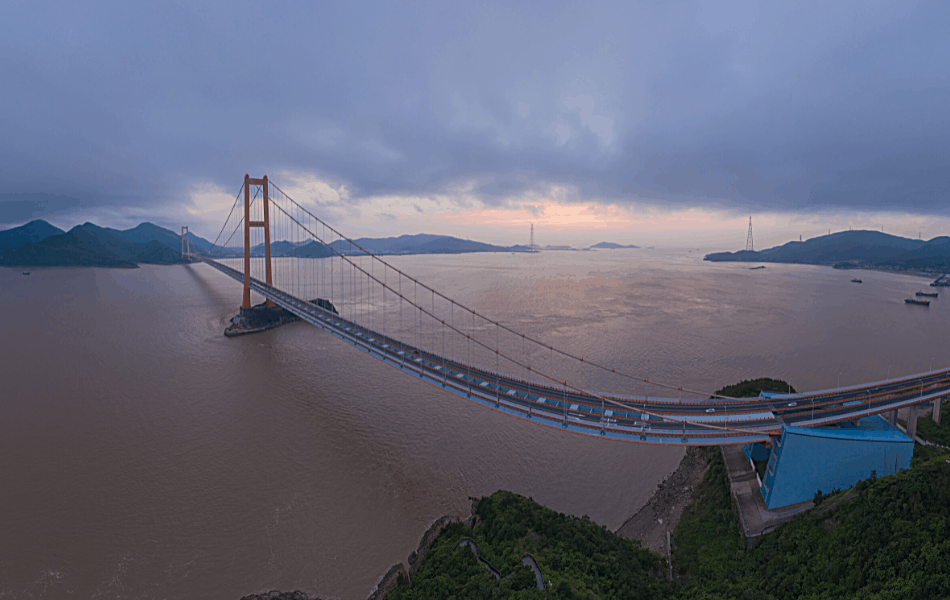
China has the most bridges in the world, encompassing over 1 million modern bridges. Solutions had to be found as 67% of the country is made up of rivers, mountains, plateaus, hills and valleys so vehicles and footgoers need to cross over many obstacles. A good example is Southwest China, which is mostly of mountains, including over 1500 rivers.
Rapid bridge construction is taking place by government and state-backed construction companies, focusing on regions with poor natural development and where poverty exists.
Why do Bridges Shake?
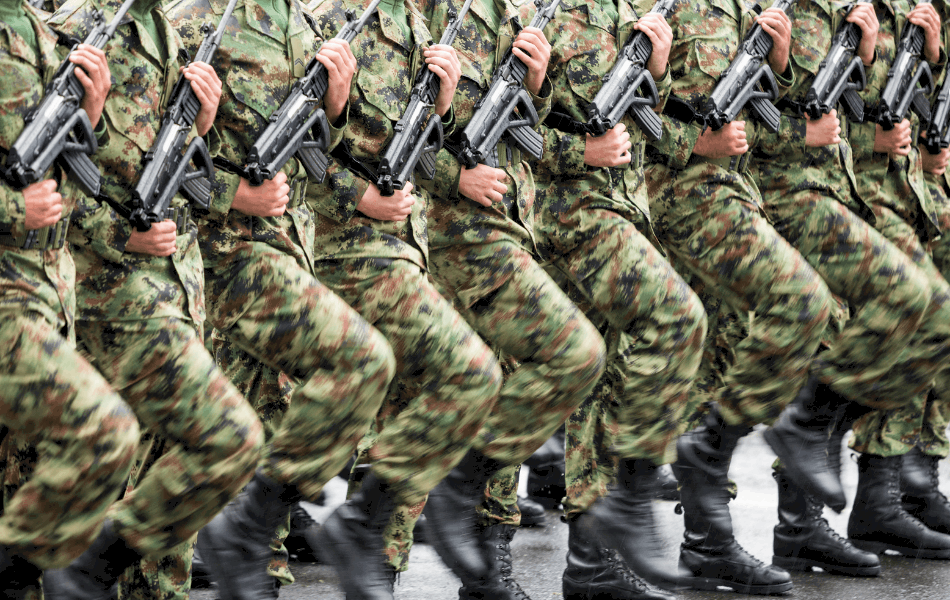
Do you know that soldiers crossing a bridge must break stride? The reason for this is they cannot match in their stride, the vibration frequency of the bridge because if doing so the bridge can collapse in certain parts.
| “On 12 April 1831, the bridge collapsed, reportedly due to mechanical resonance induced by troops marching in step. As a result of the incident, the British Army issued an order that troops should “break step” when crossing a bridge. Though rebuilt and strengthened, the bridge was subsequently propped with temporary piles whenever crowds were expected. In 1924 it was replaced by a Pratt truss footbridge, still in use.” – Wikipedia |
Bridges have been designed to move laterally and vertically to accommodate natural forces, regardless, sometimes when the traffic is heavy, the bridge can wobble. Engineers do not like to see the bridges they have created vibrate, nonetheless, they have structured the bridges to do so if the need occurs.
Wind, hurricanes, earthquakes, temperature changes and very heavy traffic can cause a force that creates the swaying on the bridge, including if many people cross a footbridge, the force of each footstep will cause a vibration.
If the weather is extreme, more often than not, the bridges will be closed for traffic for the safety of people.
Why do Bridges Freeze more quicker than Normal Roads or Land?
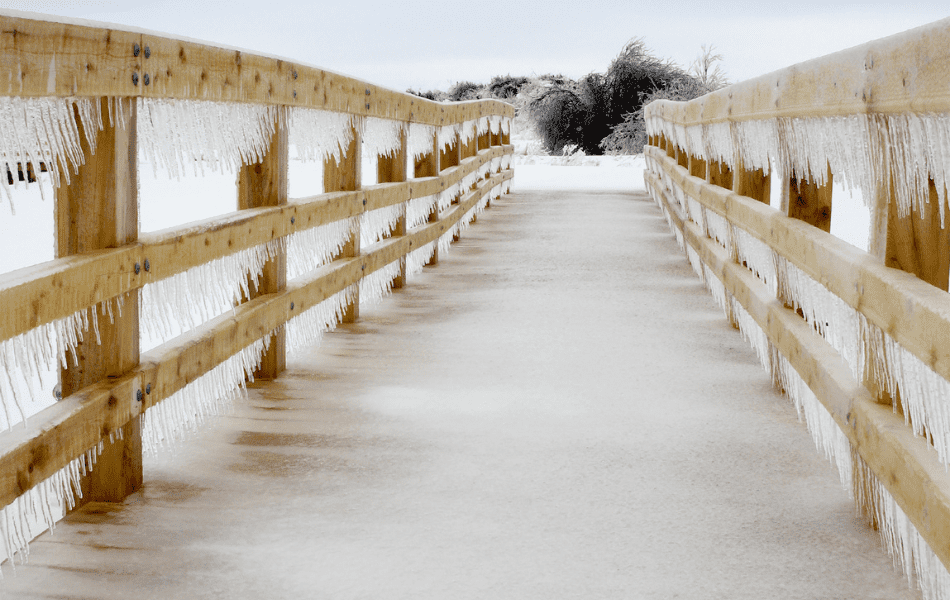
On land the road surface only loses heat from the above surface, meanwhile, a bridge exhausts heat in every direction, resulting in the heat from within the bridge being drawn upwards, sideways and downwards. In conclusion, below, above and sideways the surface temperature drops more rapidly and freezes over very rapidly.
Different Kinds of Bridges
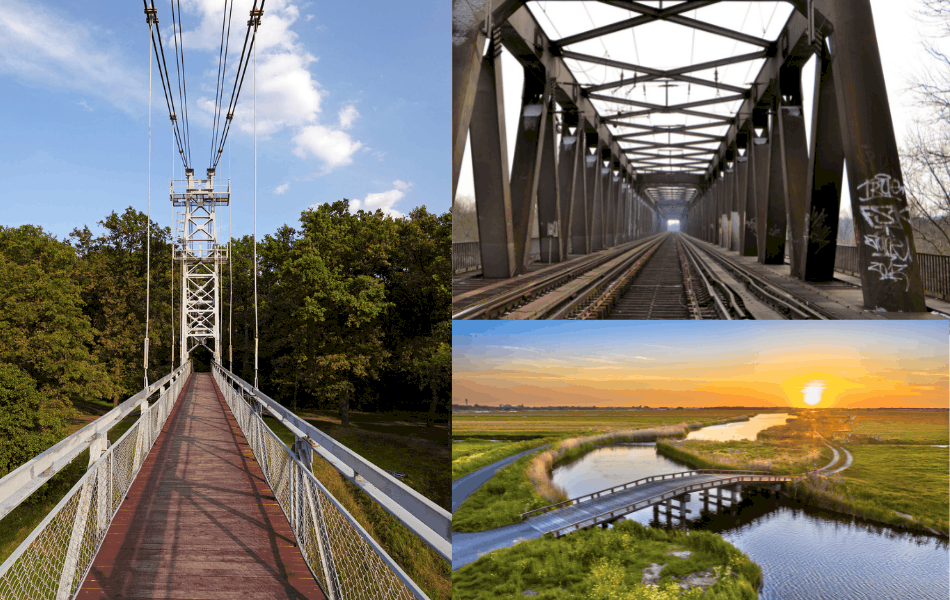
Pedestrians need bridges to walk over a numerous selection of obstacles, trains need their specially designed bridges and so does road transport.
7 Scariest & Most Unique Footbridges
| “Bridges symbolize change and flexibility! They show us this simple philosophy: When you are on one side, you can easily move to the other side!” – Mehmet Murat ilda |
1. Storms River Suspension Bridge in Tsitsikamma, South Africa
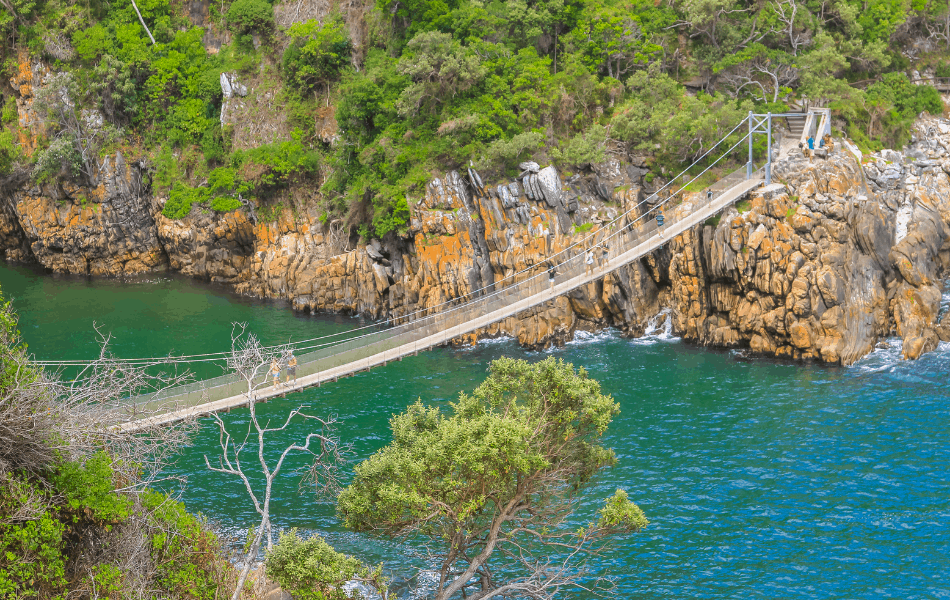
Located within the Garden Route, South Africa, many adventure-seekers hike to this suspension bridge just to experience a scary adrenalin encounter by crossing over.
Read through my article on The Garden Route – the coastal corridor and you will envisage how magnificent this part of South Africa is. I personally love and never tire of visiting Storms River and still, to this day, I get nervous bubbles when crossing.
2. Glass Skywalk at Tianmenshan Tianmen Mountain, China

This to me is the most terrifying bridge! Engulfing a spectacular view over 1 519 metres high, you can also look down at your feet and through the glass, see the precipice of the near-vertical cliff edge that plummets down.
The Zhangjiajie Tianmen Mountain Private All-inclusive Day Tour is most certainly one of the best tours ever!
3. Langkawi Sky Bridge, Malaysia

In the original construction of the world’s longest curve suspension bridge, the creation had to be done on the ground and uplifted by helicopters.
Perfect for the adventure seeker to feel on top of the world by meandering along the 125m suspension bridge, 100m above the ground.
View exquisite scenery, such as jungles and waterfalls. Make a day of it and go up via The SkyCab, visit the SkyDome and experience a 3D visual dimension, go upwards and downwards via the SkyDive and watch a 3D movie in the 6D Cinemotion. What an inconceivable happening!
4. Royal Gorge Bridge, Colorado
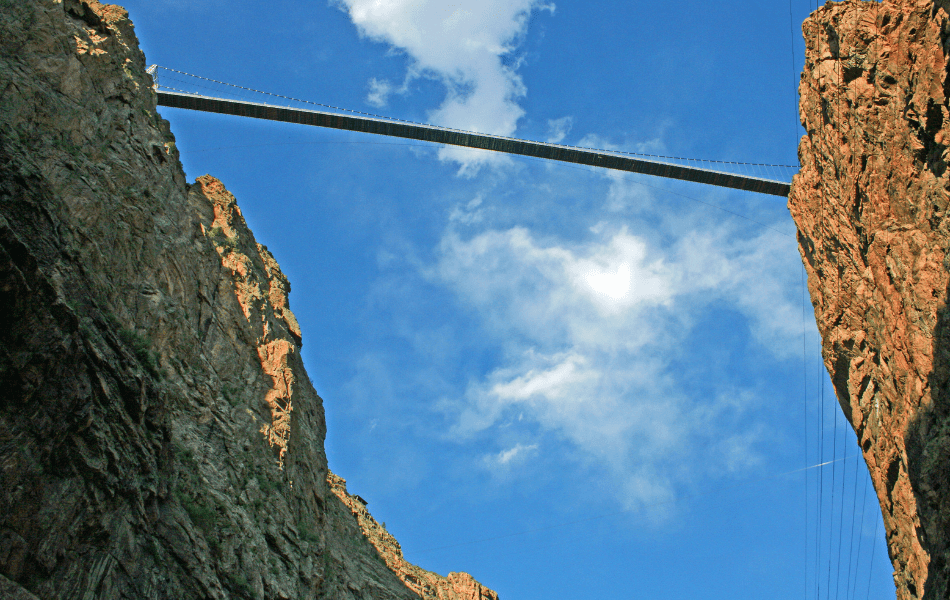
This is America’s highest suspension bridge and zip line, peripherally 296 m above the wild Arkansas River! A good analogy is to visualize yourself standing on top of the famous Chrysler Building in New York.
On 5 June 1929 construction started and took 80 men to complete in less than 7 months, and fortunately, no deaths occurred while the bridge was being constructed.
As technology advanced, in 1982 the bridge was refurbished with all modern engineering, and afterwards, in 2013 the Royal Gorge Fire transpired, destroying 90 per cent of the adjoining park. Auspiciously, the bridge itself had virtually no damage.
When you are there, make sure you encounter the best adrenaline rush ever, the Royal Rush Skycoaster.
| “Rather than focusing on the obstacle in your path, focus on the bridge over the obstacle.” – Mary Lou Retton |
5. Kawarau Bridge, New Zealand
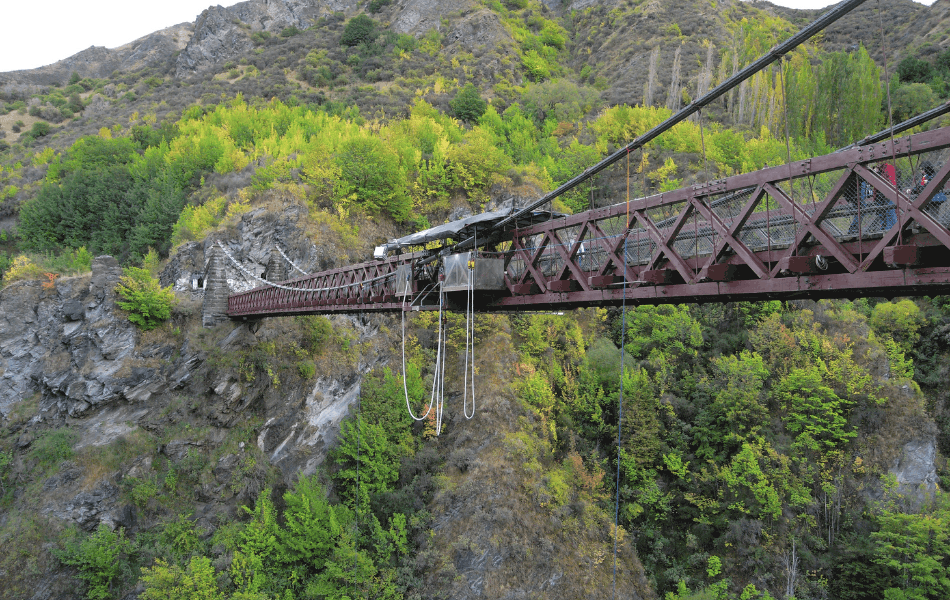
Filming of the Lord of the Rings loved this destination and its surroundings!
Gold was discovered in 1862 by Jack Tewa, a Māori shearer, who worked for William Gilbert Rees and Nicholas Von Tunzelman in the Arrow River. Understandably, once the secret was out, hundreds flocked to Queensland to find their fortune. Crowds appeared so a bridge was needed to cross over this canyon, to carry gold, equipment and food supplies.
So in 1880 Harry Higginson an engineer was called upon to build the bridge over the Kawarau Gorge. This bridge still stands today, but a new one was built in 1963, with a changed prime purpose of bungee jumping and cycling.
If you would like to experience this amazing cycling community, read my article on The Best Cycling Touring Tips for Older Adults.
6. Futuristic Murinsel (Mur Island), Austria – science fiction in awe
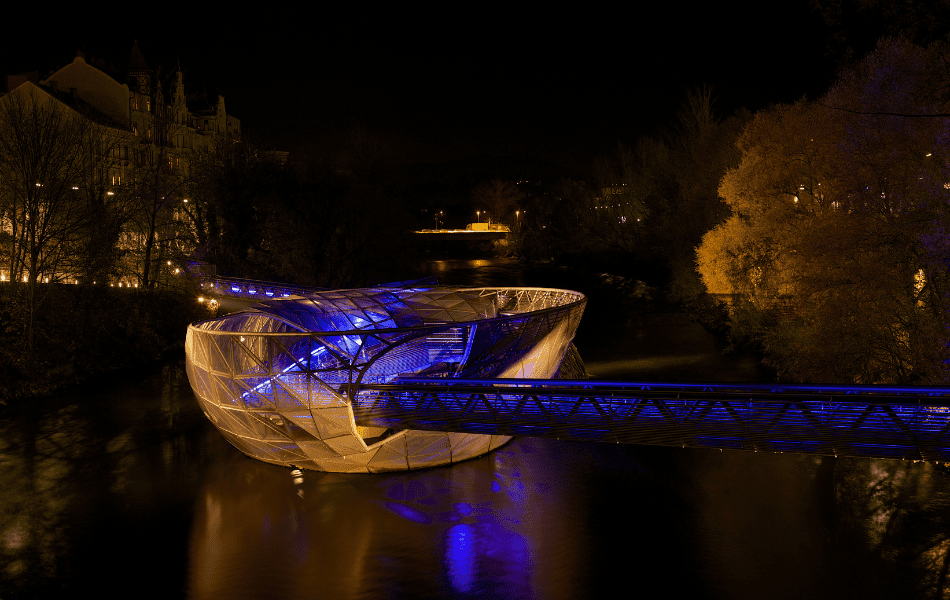
How fine-looking and picturesque are these footpaths that lead to the suggested metal, glass and steel bowl island in the centre of the Mur River, with footpath bridges that are impressive translucent blue in the evenings?
This ultra-modern construction was created by Vito Acconci, an American artist, who had a futuristic outlook.
7. The Golden Bridge, Vietnam

Designed to evoke the image of the “giant hands of Gods, pulling a strip of gold out of the land,” said Vu Viet Anh, Design Principal at TA Landscape Architecture, including a cable-car station with magnificent gardens. Created to give the tourist a charming scenic view, incorporating hands holding the golden thread.
5 Most Dangerous yet Thrilling Railway Bridges in the world
| Faster than fairies, faster than witches, Bridges and houses, hedges and ditches; And charging along like troops in a battle, All through the meadows the horses and cattle: All of the sights of the hill and the plain Fly as thick as driving rain; And ever again, in the wink of an eye, Painted stations whistle by. |
1. Burma Railway & Bridges – also known as the “Death Railway”
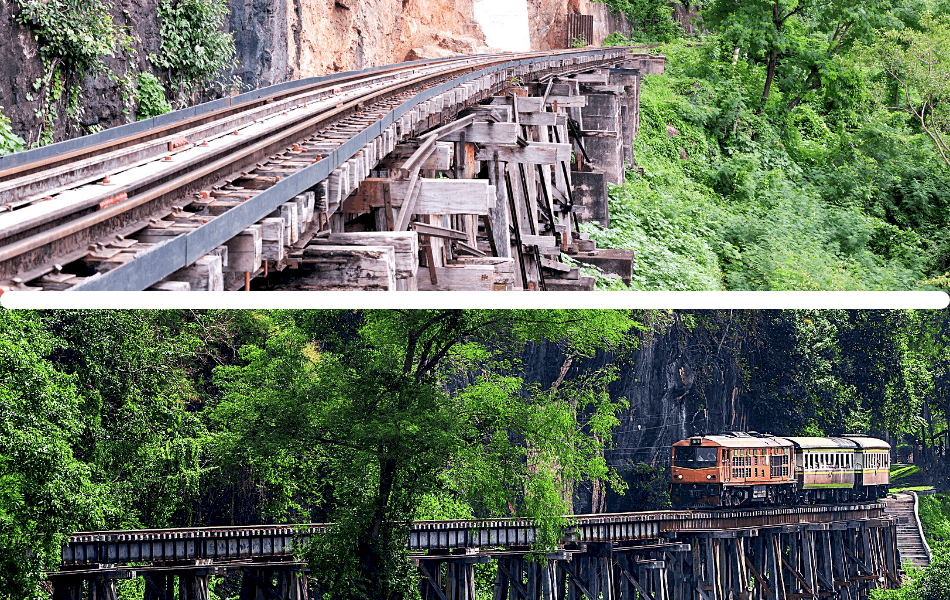
Recorded, this is also known as Thai–Burma Railway or Siam–Burma Railway and the Death Railway runs for 415 km from Thanbyuzayat, Burma to Ban Pong, Thailand.
Constructed in 1943 by the Empire of Japan to assist the militaries in the Burma battle in World War 11, for the purpose of carrying ammunition and supplies, hundreds of prisoners of war helped construct this railway under horrific, inhumane treatment by the Japanese guards. Suffering from malnutrition, awful sickness and starvation, thousands of prisoners met their death during construction, therefore the name of the Death Railway still remains today.
The most notable bridge on this railway is Bridge 277 which is known as the “Bridge on the River Kwai”. A book was written by Pierre François Marie Louis Boulle on the bridge and a film was made from his book this, in turn, made this bridge famous. (The Japanese engineers felt the movie was biased.)
2. Indian Railways Chenab Bridge – world’s highest railway bridge
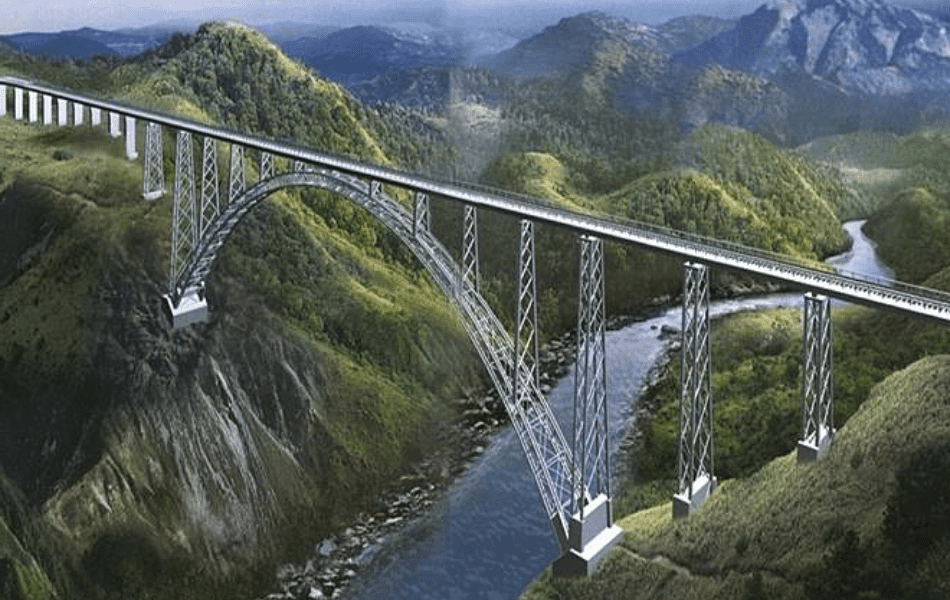
This large-span single-arch steel bridge construction was only completed in 2021! 359 m above the Chenab River connecting the territory of Jammu and Kashmir, which means it is 35 m higher than the Eiffel Tower.
There are many wind-induced forces on the bridge, but with the modern engineering technology of today, it is strong and safe!
3. Tren A Las Nubes, Argentina
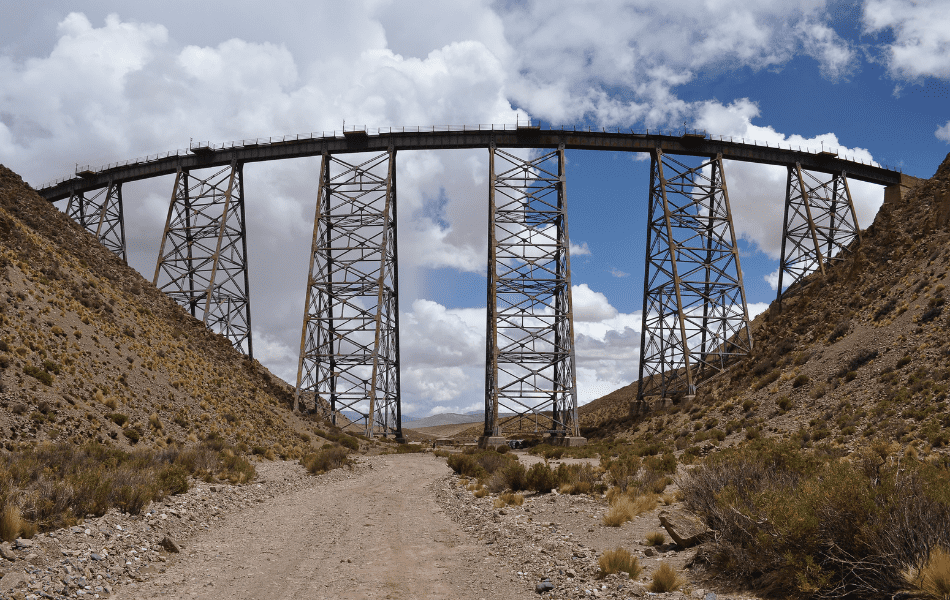
Argentina with Northern Chile is connected by the “Train to the Clouds“ and goes over the Andes Mountains, exposing astounding scenic views, named such because the altitudes you reach are extremely high. The guide who informs you (yes also in English) on your tour bus trip to the train station is super and you stop at a quaint place for breakfast.
You can actually feel the air thinning as you approach this city on your initial bus trip.
4. Pamban Bridge – Chennai-Rameswaram Route, India
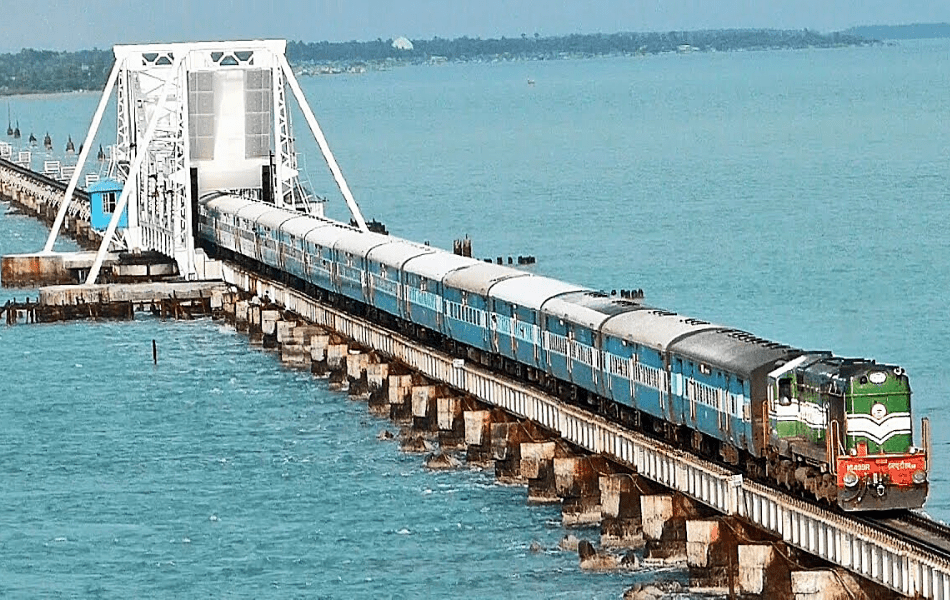
This is a sea bridge in India that connects Mandapam on the mainland to Pamban Island (also known as Rameswaram). Visit this tiny island on a sea bridge in India that connects Mandapam on the mainland to Pamban Island (also known as Rameswaram).
Local residents regard this island as the holiest of all of India however, the boat trips to the island are scary and hazardous as storms occur virtually every day, causing very rough seas. Stormy weather also can be petrifying on the railway bridge when these storms flare up, whilst the winds never seem to stop, initiating the bridge to vibrate and shake.
5. Kaaimansrivier Railway Bridge – Outeniqua Choo Tjoe
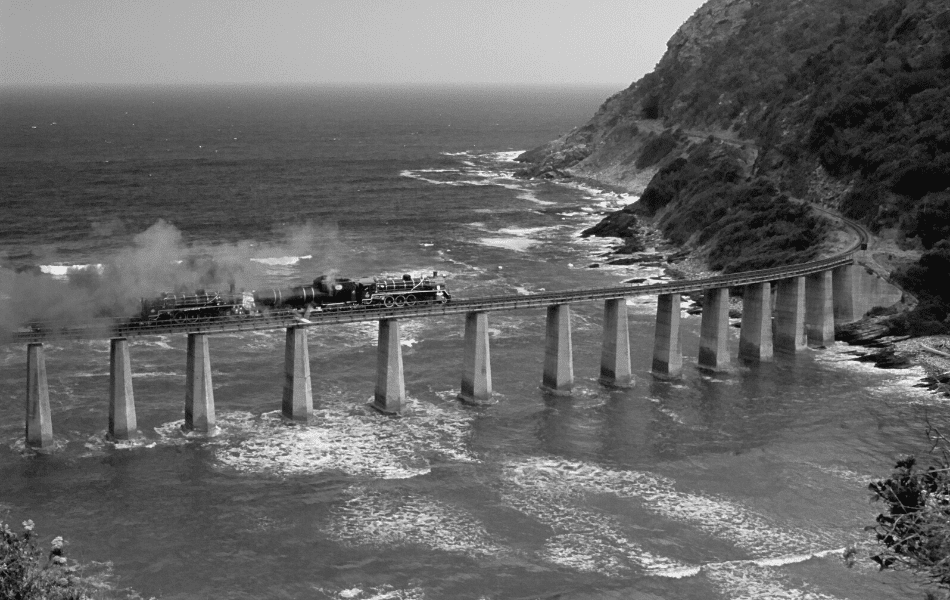
Thousands of pictures and thousands of commuters have had their ride and taken pictures of the famous Outeniqua Choo Tjoe along the Garden Route in South Africa. A great tourist attraction with stunning views as the steam engine travels along the track from George to Knysna.
Outeniqua Choo Tjoe was the last remaining operational steam engine in South Africa. In 2002, it carried 115 000 tourists on its tracks, but in August 2010, Transnet announced that the historic train would cease operating as the floods had damaged the tracks.
“Spokesperson for Transnet Freight Rail, Mike Asefovitz, said the organisation still wants to see the Outeniqua Choo Tjoe up and running again with the help of the private sector.” – George Herald. Hopefully, this will happen and in 2022 you can once again cross the Kaaimansrivier Railway Bridge on this marvellous Choo Tjoe.
6 of the World’s Craziest and Most Dangerous Road Bridges
| “Bridges become frames for looking at the world around us” – Bruce Jackson |
1. Dragon Bridge, Vietnam

Dragon Bridge which crosses the Ljubljanica River is wide enough for 6 lanes of traffic and is 666m long, subsequently, it is the longest bridge in Vietnam. Spectators watch in awe at the display of water, fire and lights that the dragon breathes out from its mouth, with displays occurring at 9 pm every Saturday and Sunday night.
Dragon Bridge took 2 years to construct and officially opened in 2013. Tourists throughout the world flock to observe these Saturday and Sunday performances of the dragon.
2. Eshima Ohashi Bridge, Japan – how brave are you?

Roller coaster time! Terrifying and insane for the motorist every time he/she goes up or down this bridge. Japan is probably the safest place in the world, but the safety of the Eshima Ohashi Bridge is questionable.
Imagine your brakes failing as you descend! This bridge crosses over Lake Nakaumi and is the largest ridged concrete bridge in Japan and the third-largest in the world. It allows ships to pass under and connects the cities of Sakaiminato and Matsue, however many drivers who travel this bridge regularly still suffer from nausea or anxiety every time they use this bridge.
3. Millau Bridge, France – Millau Viaduct

The Millau Viaduct bridge, a multi-span cable-stayed bridge is a big deal because it is 2 460 m long and 343 m high, situated in southern France, being recorded as the highest road bridge in the world. A 4-lane highway that started being planned in 1975 and was only completed in 2004.
Michel Virlogeux designed the bridge in 1991 but construction only began in October of 2001. It took 3 years to complete.
Did you know initially the deck was constructed on flat land on the north and south sides of the bridge in two large sections?
4. Confederation Bridge, Canada
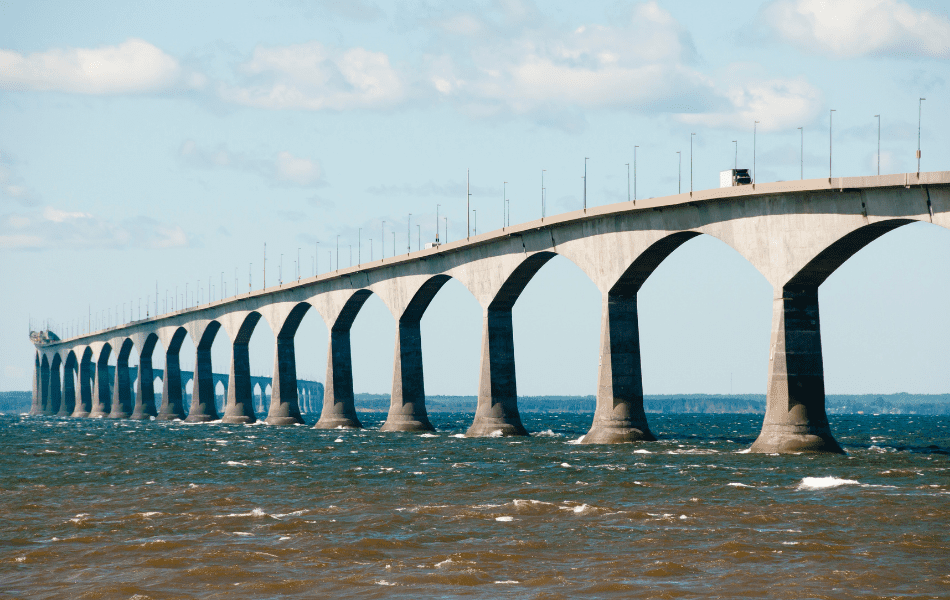
Yes, it is curved with a double purpose so the driver will concentrate while crossing with high winds and hopefully prevent accidents and also allow the bridge (the longest in the world) to last 100 years and withstand the icy waters below. When there are extremely high winds, different modes of vehicles are restricted from crossing, avoiding disaster as the 44 piers have a depth of 35m into the Northumberland Strait.
Construction began in 1993 and only 3 employees died during construction, which I am told is very low.
5. Lego Bridges – Germany & Sweden
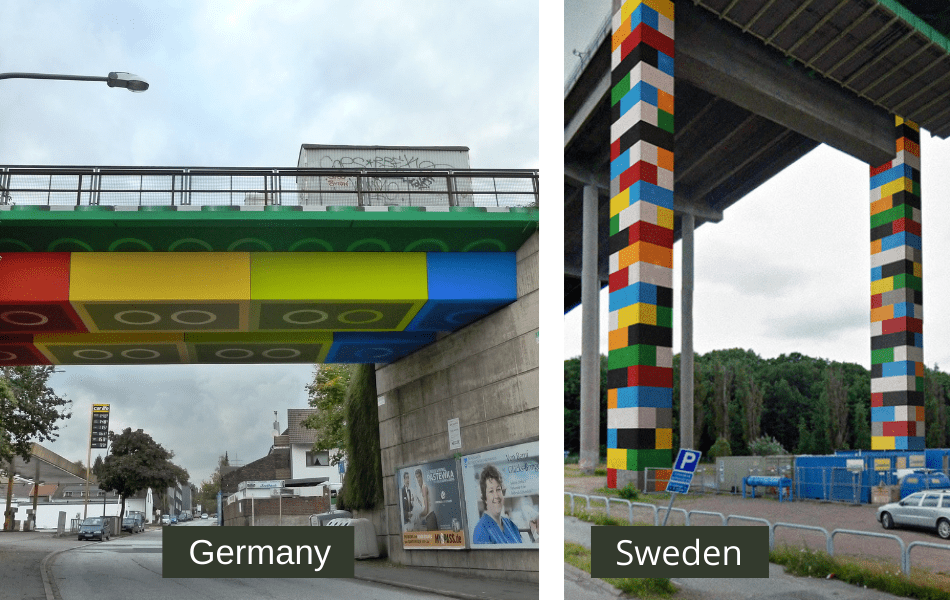
LEGO is the passion of my grandkids, therefore these bridges fascinated me!
Not scary at all but crazy! The lego bridge in Germany is 250 square metres, not very long at all, and is made from concrete. Martin Heuwold a graffiti artist painted the concrete to look like lego and he received international media attention for his work, in turn, every kid screams in delight when going under.
Martin Heuwold the artist from Madrid painted the main pillars of this bridge to look like giant lego blocks. It can be seen from miles around. What makes these pillars extra special is that the painting of these bricks was worked on by the “Let’s Color Gothenburg” project. a project which gathers unemployed youth and created work.
6. Sheikh Zayed Bridge, Abu Dhabi, United Arab Emirates
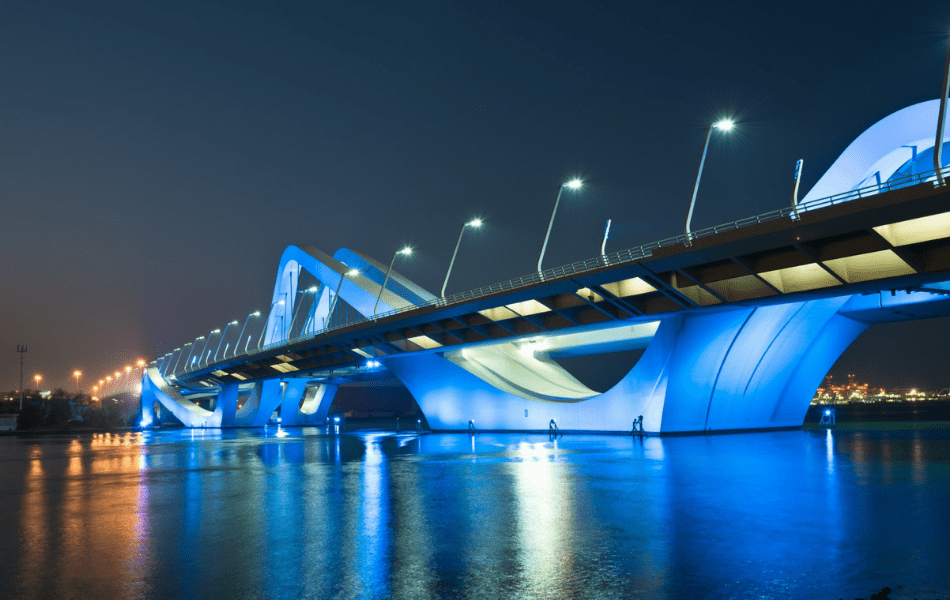
Practical, striking with an aesthetic purpose scaped around a radical deconstructivist design, simultaneously connecting the capital city Abu Dhabi, Emirate’s largest island, with Dubai over the Maqta Canal.
An intricate design and spectacular lighting draw the spectator to view this bridge, an icon of urban development and the world’s most intricately designed bridge. YES, it was designed by Iraqi architect Dame Zaha Hadid, who sadly died in 2016 in Miami, Florida and she was a woman! She was the first woman to win the Pritzker Prize. Known for her radical deconstructivist designs.
| Bridges symbolize so much to me. Every day we cross bridges. Some huge, some small, some dangerous, some crazy, some beautiful and some not sturdy at all. Our spiritual bridge between us and God, we have the decision whether it is a diminished one or mammoth. With our love for our partners, we can walk the bridge together or choose to walk on different bridges, yet one walk together can be a far more pleasurable and supportive experience. We cross a bridge from youth to a wiser time in our life. Our past to our future gives us a bridge to either look behind or keep our eyes on the finish. A bridge is a passage to reality. How do you view your bridges? |
What are your favorite bridges? Which country are they in? Let us know in the comments section below.
Recent Posts
Discover insider tips to find cheap flights from the UK, save on easyJet, Ryanair & BA, and score the best weekend and last-minute deals. Why You’re Paying Too Much for Flights Most UK...
Discover the sounds of travel, from laughing kookaburras to market chatter, church bells to ocean waves - a journey heard as much as seen. It always starts with a sound. The other day, walking...

